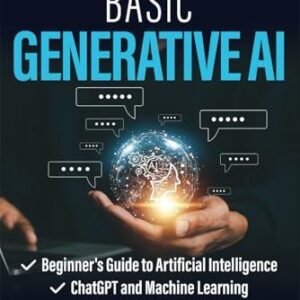As we step boldly into an era defined by rapid technological advancement, the landscape of education is evolving at an unprecedented pace. Among the many traditional academic disciplines, STEM—Science, Technology, Engineering, and Mathematics—stands at the forefront of this transformation. Enter artificial intelligence (AI), a groundbreaking force set to redefine how educators teach and students learn. In today’s classrooms, AI is not merely a tool but a collaborator, bringing to life personalized learning experiences, enhancing critical thinking skills, and fostering innovation. This article delves into the pivotal role of AI in reshaping STEM education, exploring its potential to bridge gaps, elevate engagement, and prepare the next generation for the challenges of an ever-changing world. Join us as we unpack the powerful synergies between artificial intelligence and STEM, and envision a future where learning is not just about acquiring knowledge, but also about cultivating the minds of tomorrow’s leaders and innovators.
Table of Contents
- The Integration of AI Tools in STEM Curriculum Development
- Enhancing Personalized Learning Experiences through AI
- Bridging the Skills Gap: How AI Prepares Students for Future Careers
- Evaluating the Impact of AI on Student Engagement and Success in STEM Education
- The Way Forward
The Integration of AI Tools in STEM Curriculum Development
The implementation of AI tools in STEM curriculum development represents a significant leap towards personalized learning experiences. By analyzing student data and learning patterns, AI can identify individual strengths and weaknesses, enabling educators to create tailored lesson plans that cater to diverse learning needs. This journey towards customization can enhance student engagement and efficacy, ensuring that complex concepts in science, technology, engineering, and mathematics are more accessible. For instance, AI-driven platforms can suggest specific exercises based on a student’s performance, making it easier to grasp foundational skills before progressing to advanced topics.
Furthermore, the collaborative capabilities of AI facilitate an interactive learning environment that encourages teamwork and problem-solving. In project-based learning scenarios, AI can aid students in brainstorming, experimenting, and refining their ideas. AI tools like virtual labs and simulation software allow students to conduct experiments that would be impractical or impossible in a traditional classroom setting. This approach not only enhances their understanding of theoretical concepts but also instills critical thinking skills. The following table illustrates various AI tools that can be integrated into the STEM curriculum:
| AI Tool | Application in STEM |
|---|---|
| Smart content creation | Customizable learning materials tailored to student needs |
| Data analysis software | Identifying patterns in student performance for targeted interventions |
| Virtual labs | Simulating experiments in biology, chemistry, and physics |
| AI-driven tutoring systems | Providing real-time feedback and assistance to students |
Enhancing Personalized Learning Experiences through AI
Artificial Intelligence is revolutionizing the way personalized learning experiences are developed and delivered in STEM classrooms. By leveraging AI technologies, educators can analyse individual student performance and preferences to tailor lesson plans that align with their unique learning styles. Adaptive learning systems can provide real-time feedback, ensuring that each student receives the attention they require to master complex concepts. With data-driven insights, teachers can easily identify struggling students and offer targeted interventions before they fall too far behind their peers.
Moreover, AI can enhance engagement by incorporating interactive elements that appeal to students’ interests. For instance, personalized quizzes and gamified learning experiences can transform traditional lessons into captivating explorations of scientific concepts. Beyond just personalization, AI-driven platforms facilitate collaborative projects by connecting students with similar interests from diverse geographical locations. The following table illustrates some of the key benefits of utilizing AI in personalized STEM education:
| Benefit | Description |
|---|---|
| Customized Learning Paths | AI curates content and exercises that suit individual learning speeds and preferences. |
| Data Utilization | Analytics provide insights into overall class performance and individual progress. |
| Immediate Feedback | Students receive timely responses to their queries, speeding up the learning process. |
Bridging the Skills Gap: How AI Prepares Students for Future Careers
As the demand for skilled professionals in tech and engineering disciplines continues to soar, educational institutions are increasingly turning to artificial intelligence as a pivotal tool in shaping the future workforce. AI-driven platforms can offer personalized learning experiences, adapting to each student’s strengths and weaknesses. This customization fosters engagement, enabling students to grasp complex concepts at their own pace. Furthermore, by incorporating AI into the curriculum, students gain exposure to the latest technologies, effectively preparing them for diverse career paths in STEM fields that require fluency in digital tools and data analysis.
The integration of AI in education isn’t merely about teaching technical skills; it also emphasizes essential soft skills that are crucial in the workplace. Students learn to navigate collaboration tools, enhance their problem-solving abilities, and develop critical thinking skills through real-world projects and simulations. By bridging the gap between theoretical knowledge and practical application, AI encourages students to innovate and adapt—two qualities that are highly sought after by employers. Through interactive learning environments powered by AI, educational institutions are not just preparing students for jobs; they are equipping them to thrive in an ever-evolving technological landscape.
Evaluating the Impact of AI on Student Engagement and Success in STEM Education
Artificial Intelligence is revolutionizing the way students engage with STEM subjects, providing tailored learning experiences that cater to individual needs. By leveraging data analytics, AI systems can assess a student’s strengths and weaknesses, leading to personalized educational pathways. This dynamic environment encourages deeper exploration of topics, as students are presented with challenges that align with their interests and skill levels. Some of the most prominent impacts include:
- Adaptive Learning Platforms: These platforms adjust in real-time to student performance, ensuring they are always challenged but not overwhelmed.
- Enhanced Collaboration: AI facilitates collaboration among students, allowing for group projects that harness diverse skills and perspectives.
- Immediate Feedback: Students receive prompt assessments on assignments, helping them understand mistakes and improve rapidly.
The potential influence of AI extends beyond engagement, directly correlating with student success rates in STEM disciplines. Through intelligent tutoring systems, learners benefit from targeted practice sessions that address their unique gaps in knowledge, ultimately enhancing retention and mastery of complex concepts. Research indicates that educational AI can significantly improve performance metrics, as illustrated in the following table:
| AI Implementation | Improvement in Test Scores (%) | Increase in Student Engagement (%) |
|---|---|---|
| Adaptive Learning Tools | 15 | 25 |
| Intelligent Tutoring Systems | 20 | 30 |
| Gamified Learning Environments | 18 | 40 |
as educational institutions continue to integrate AI technologies into their curriculum, the ongoing assessment of their effects on student engagement and success in STEM will prove pivotal. Harnessing these insights allows educators to optimize resources and develop more effective teaching strategies, ultimately shaping a more competent and enthusiastic generation of STEM professionals.
The Way Forward
As we stand at the precipice of a new era in education, the integration of AI into STEM classrooms presents an exciting opportunity for both educators and students alike. By harnessing the power of advanced technologies, we can create an immersive learning environment that not only enhances understanding but also fosters innovation and problem-solving skills essential for the challenges of tomorrow.
The transformation of STEM education is not solely about the tools we use; it’s about reimagining the way we teach and learn. With AI as a partner, educators can tailor their approaches to meet the diverse needs of students, creating more personalized and engaging experiences. The future of learning is adaptive, collaborative, and grounded in real-world applications, allowing students to explore their passions while developing critical competencies.
As we move forward, it is essential for educators, policymakers, and technology developers to work together to ensure that AI in the classroom is accessible, equitable, and effective. By embracing this transformative potential, we can inspire the next generation of thinkers and innovators who will shape the future of our world.
So, as we continue this journey of transformation, let’s remain committed to exploring the endless possibilities AI offers in enriching STEM education. The classrooms of tomorrow are not just about preparing students for careers in technology; they are about empowering them to become leaders in their fields, driven by curiosity and creative thinking. Together, we can pave the way for a brighter future, where knowledge and technology converge to unlock the full potential of every learner.





